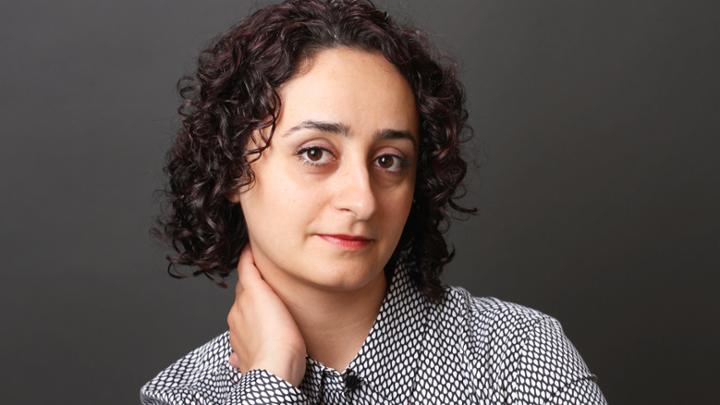Computer Science research aims to extend human “health span”
November 03, 2022

Computer Science may not be the first field that springs to mind when considering better ways to treat a devastating condition such as Alzheimer’s disease.
But for UVic researcher Hosna Jabbari, the discipline holds enormous promise in finding ways to predict Alzheimer’s in people decades before symptoms show up.
Jabbari is an expert in computational biology, a field that uses data analysis, algorithms, artificial intelligence, and computer simulations to better understand and make predictions about human biological systems. Among several projects, her research team is looking for ways to detect Alzheimer’s many years before a person begins to show any symptoms.
“Many studies show that Alzheimer’s is normally detected 15 to 20 years after the disease actually starts,” says Jabbari, an assistant professor in UVic’s Department of Computer Science.
“If we can find diagnostic biomarkers to detect the disease much, much earlier than what is currently being done, we can intervene and start using a range of preventative techniques to greatly slow its rate of progression.”
One of the biggest challenges in diagnosing people sooner is the lack of data on Alzheimer’s patients, says Jabbari. Many people with the condition don’t consent to sharing their medical information and clinical trials are very expensive; furthermore, it’s very challenging to isolate Alzheimer’s disease in studies because most patients are older and have numerous health problems, she says.
“The size of datasets with real patients’ data is small for almost all medical studies including Alzheimer’s – this is why the general forms of machine learning and artificial intelligence techniques won’t work; this is where development of task specific methods can play an important role,” says Jabbari, who leads the Computational Biology Research and Analytics (COBRA) lab at UVic.
“My lab is trying to find ways to augment these tiny datasets by generating artificial data based on the known data of the same or adjacent disease,” she explains. “We mix the artificial and original data so that machine learning methods can determine the patterns.”
Last year, the National Research Council awarded Jabbari $320,000 over three years to conduct this Alzheimer’s research. In particular, her lab is tasked with looking at the specific sequencing of lipids and metabolomes for Alzheimer’s and what patterns or changes can be used as early predictors for a person who may be developing the disease.
The long-term goal
While human life expectancy has increased dramatically over the past century, the long-term goal of much of Jabbari’s work is to extend people’s “health span” – the number of years that they are healthy.
“When diseases are identified and diagnosed at very early stages, the chance for survival is much higher because we can intervene early by using lifestyle changes and treatments to slow the disease’s rate of progression,” she says.
“Over time, the ideal is that people could go for a regular blood test that would allow us to predict if they are pre-Alzheimer’s or not, for example, – that’s something we can’t detect right now.”
The Alzheimer’s research is one of several age-related projects Jabbari’s lab is working on.
In another project, her lab is collaborating with a multi-disciplinary team at UVic that is looking at how people age differently, and how determining a patient’s biological age – versus their chronological age – could help in areas such as deciding at what point they should receive certain medical screening tests, for example.
Focus on RNA therapies
Much of Jabbari’s past research has focused on showing how RNA therapies can help in the treatment of human diseases, ranging from Duchenne Muscular Dystrophy to COVID. She says the recent success in using RNA vaccines against the COVID virus have shown how promising this approach can be.
“RNA therapy could treat a lot of diseases that are currently not treatable,” says Jabbari. “RNA molecules treat specific issues by matching a target site and prevent a disease, for example.”
Jabbari’s lab studies the shape of RNAs in order to target a particular disease. An RNA molecule can mask or correct part of a damaged cell to prohibit disease. Importantly, in a computational setting, researchers can look at billions of possibilities and narrow them down to a handful of options that can be studied in a biological setting.
“We can look at all the possible shapes and structures of RNA computationally,” she explains. “By hypothesizing which molecules are going to be the best performers, we reduce a great many failed cases for experiments – using a computational approach means you can look at these possibilities much faster and much more economically.”
